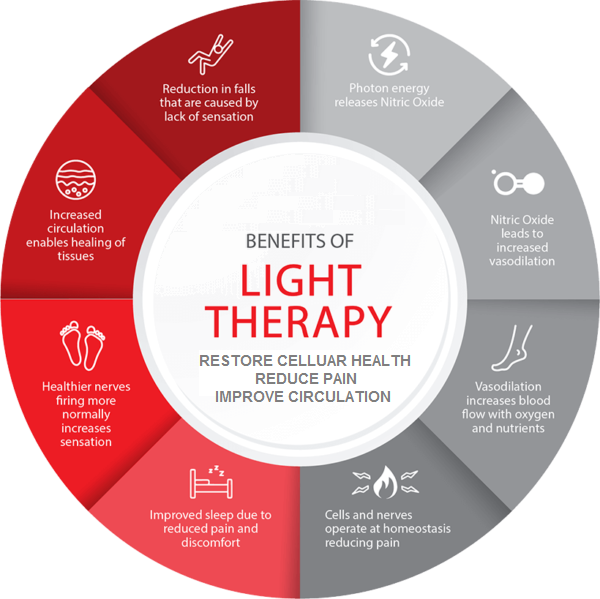Have you ever experienced a sudden burst of energy after being exposed to a bright red light? If so, you may be surprised to learn that this is actually a real phenomenon! Red light has been shown to have a profound effect on our brains, from increasing alertness and energy levels to promoting better sleep. In this article, we will explore what red light does to our brains and how we can use it to our advantage. So, if you are curious about the power of red light and how it can help improve your life, then read on!
Red light can have an effect on your brain and body. Studies have found that exposure to red light can improve alertness, reaction time, and accuracy. It has also been linked to improved sleep, improved mood, and increased energy levels. Red light has even been used to treat depression and anxiety.
Red light is thought to mimic the natural light of the sun, and can help to regulate the body’s circadian rhythm. It is believed to help the brain produce more serotonin, which is a hormone responsible for regulating mood and energy. Red light can also help to reduce inflammation, which can be beneficial for overall health.

Contents
How Red Light Affects Your Brain
Red light is known to have a powerful effect on the brain. It is believed to stimulate the production of hormones and neurotransmitters that can alter a person’s mood, behavior, and cognitive abilities. In this article, we will discuss what research has revealed about how red light affects the brain and the potential implications of this effect.
The first thing to note is that exposure to red light has been found to have a calming effect on the brain. This can be attributed to the fact that red light helps to stimulate the production of the hormone melatonin, which is associated with feelings of relaxation and sleepiness. Additionally, exposure to red light has been found to increase the production of serotonin, a neurotransmitter that has been linked to feelings of wellbeing and happiness.
Another important effect of red light on the brain is that it has a stimulatory effect on the brain’s reward system. This means that exposure to red light can cause the brain to release dopamine, a neurotransmitter associated with pleasure and motivation. This can lead to an increase in energy levels and an improved sense of motivation and focus.
Red Light and Cognition
Red light has also been shown to have a positive effect on cognition. Research has found that exposure to red light can improve a person’s ability to focus and concentrate, as well as their memory and recall. Additionally, red light has been found to reduce stress and improve alertness, which can lead to increased productivity.
Finally, red light has been found to have a positive effect on creativity. Studies have shown that exposure to red light can increase a person’s creative problem-solving abilities, as well as their ability to think outside of the box.
Potential Benefits of Red Light
The potential benefits of red light are vast, and it is easy to see why it is becoming increasingly popular. Not only can red light help to improve a person’s mood and cognition, but it can also help to reduce stress levels, improve alertness and focus, and increase creativity.
As such, red light therapy has become a popular treatment for a range of conditions, from depression and anxiety to insomnia and chronic pain. Red light therapy is also used to improve skin health and reduce the appearance of wrinkles and other signs of aging.
Potential Dangers of Red Light
While red light can have a positive effect on the brain, it is important to note that there are potential dangers associated with its use. Most notably, overexposure to red light can lead to a range of health issues, such as eye strain, headaches, and even seizures.
Additionally, it is important to note that red light can disrupt the body’s natural circadian rhythm, which can lead to insomnia and other sleep disturbances. As such, it is important to limit exposure to red light at night, as this can interfere with the body’s natural sleep cycle.
Red Light May Improve Mental Health
Finally, it is worth noting that while red light can have potential dangers, it can also have a positive effect on mental health. Studies have shown that exposure to red light can help to reduce symptoms of depression and anxiety and can even improve self-esteem.
Red light therapy has also been found to be an effective treatment for Seasonal Affective Disorder (SAD), a type of depression that is experienced during the winter months. By exposing the brain to red light, it is possible to reduce symptoms of SAD and improve overall mental health.
Red Light and Brain Function
Overall, it is clear that red light has a powerful effect on the brain. By stimulating the production of hormones and neurotransmitters, red light can have a calming and stimulatory effect on the brain. Additionally, red light has been found to improve cognition, reduce stress levels, and even improve mental health.
However, it is important to note that overexposure to red light can lead to a range of health issues, such as eye strain, headaches, and even seizures. As such, it is important to take caution when using red light and to limit exposure at night to ensure that the body’s natural sleep cycle is not disrupted.
Frequently Asked Questions
What Does Red Light Do to Your Brain?
Q1: How does red light affect the brain?
A1: Red light affects the brain by stimulating the body’s production of melatonin, a hormone that helps regulate sleep. Melatonin is produced in response to darkness, and so when red light is present, the brain does not produce as much. This can affect the body’s natural sleep cycle, leading to difficulty sleeping and feeling tired during the day.
Q2: What are the potential benefits of red light?
A2: Red light may have potential benefits for the brain, including improved concentration and alertness, increased energy levels, and improved mood. It has also been suggested that red light may help the body recover from physical and mental injuries, as well as reduce inflammation and pain.
Q3: Are there any risks associated with red light?
A3: Although there is evidence to suggest that red light may have potential benefits, there is also some research that suggests potential risks. For example, red light has been linked to increased levels of oxidative stress, which can lead to damage to cells and tissue. Additionally, research suggests that too much red light may interfere with the body’s natural production of melatonin, leading to difficulty sleeping.
Q4: Can red light help with mental health conditions?
A4: While there is no scientific evidence to support the use of red light for the treatment of mental health conditions, some research suggests that it may help with symptoms such as anxiety and depression. However, further research is needed to determine the effectiveness of red light for the treatment of mental health conditions.
Q5: How much red light is safe?
A5: The amount of red light that is safe to be exposed to has not yet been determined. It is important to follow the instructions of your doctor or other healthcare provider when using red light devices, and to avoid overexposure.
Q6: Are there any natural sources of red light?
A6: Yes, there are natural sources of red light. The sun emits red light, and it can also be found in the light from certain types of fire or flame. Additionally, some LED lights are designed to emit a red light.
Mass. researchers examine light therapy’s impact on brain injuries
Red light has been studied extensively and is known to have very powerful effects on our brains. It can increase alertness, reduce stress, and boost overall cognitive performance. It can also help improve sleep quality, reduce headaches, and even help with depression. Red light therapy is a safe and effective way to improve mental and physical health. With the right combination of frequency, intensity, and duration, red light can help us to achieve a better quality of life.


.jpg)





